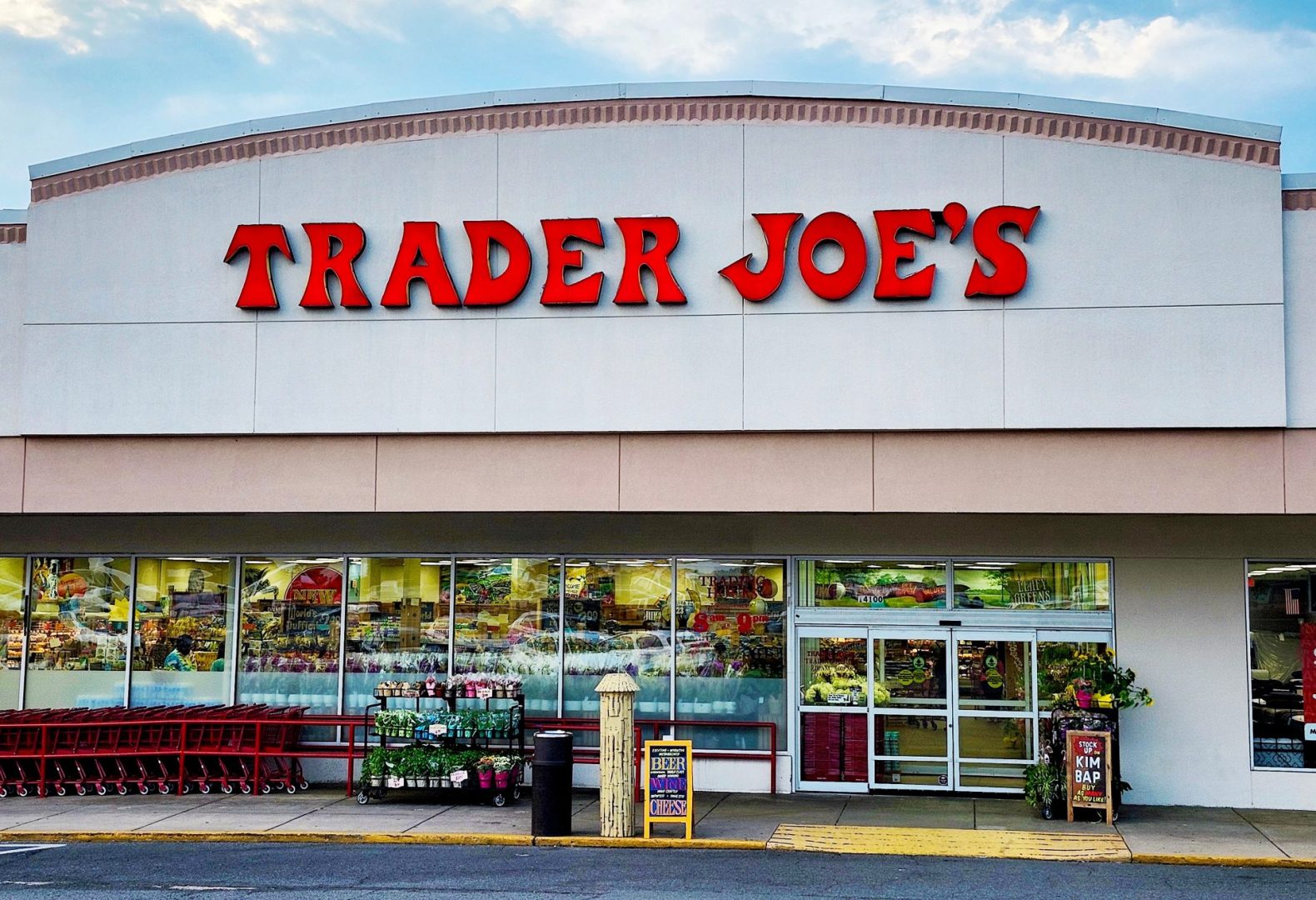The cheerful aisles of Trader Joe’s have become the center of a serious health concern as the beloved grocery chain issued an urgent recall for one of its popular cheese products. Shoppers across two states are now scrambling to check their refrigerators for potentially contaminated cheese curds that could pose severe health risks to anyone who consumes them.
This recall affects thousands of customers who purchased what they thought was a safe, tasty snack but unknowingly brought home a product that harbors one of the most dangerous foodborne pathogens. The contamination discovery has prompted immediate action from both the retailer and health authorities, highlighting the ongoing challenges in food safety that can turn everyday grocery shopping into a health hazard.
The timing of this recall proves particularly concerning as many families have likely already consumed portions of the affected product, potentially exposing themselves to serious illness. The bacteria involved in this contamination can cause life-threatening infections, especially in vulnerable populations including pregnant women, elderly individuals, and those with compromised immune systems.
Understanding the scope and severity of this recall becomes crucial for anyone who shops at Trader Joe’s or has recently purchased cheese products from the affected regions. The recall demonstrates how quickly food safety situations can escalate and why immediate consumer action is essential to prevent widespread illness.
The contaminated product details
The recalled cheese curds carry the distinctive name “Vampire Slayer Garlic Cheddar Curds” from Face Rock Creamery, a product that has gained popularity among Trader Joe’s customers for its bold flavor and artisanal quality. These 6-ounce packages seemed like any other specialty cheese offering until routine testing revealed the hidden danger lurking within.
The specific identification numbers for this recalled product include UPC code 8 51222 00528 7, with lot numbers 20250519VS01 and 20250519VS02. These technical details become lifelines for consumers trying to determine whether their purchased cheese poses a health risk. The use-by date of August 29, 2025, indicates these products were intended for long-term storage, meaning many consumers may still have them in their refrigerators.
Face Rock Creamery’s discovery of the contamination during routine testing suggests that quality control systems worked as intended, catching the problem before it could spread further. However, the fact that contaminated products reached store shelves and consumer homes demonstrates the limitations of current food safety protocols in preventing all contamination incidents.
The garlic cheddar flavor profile of these curds likely made them popular choices for entertaining, snacking, and cooking applications. This versatility means the contaminated product may have been used in various ways, potentially exposing multiple people within households or social gatherings to the dangerous bacteria.
Product packaging and labeling for these cheese curds would have appeared normal to consumers, with no visible indicators of the contamination present within. This invisibility of bacterial contamination emphasizes why food recalls require immediate and comprehensive consumer response rather than waiting for symptoms to appear.
Geographic distribution and affected areas
The recall specifically targets Trader Joe’s locations throughout Northern California and Northern Nevada, covering a significant geographic area that includes major metropolitan regions and smaller communities. Northern California locations from Monterey and Fresno extending northward encompass millions of potential consumers who may have purchased the contaminated cheese curds.
Nevada’s affected areas include Carson City, Reno, and Sparks, representing the state’s major population centers in the northern region. These communities often rely heavily on Trader Joe’s for specialty food items, making this recall particularly significant for local residents who frequently shop at these stores.
The geographic limitation of this recall suggests that distribution networks for this particular product follow specific regional patterns, with contaminated batches reaching only certain areas rather than nationwide distribution. This targeted approach helps focus recall efforts while potentially limiting the overall number of affected consumers.
Travelers and visitors to these regions during the relevant time period may have purchased the contaminated cheese curds and transported them to other areas, potentially expanding the geographic scope of exposure beyond the official recall boundaries. This possibility complicates tracking and notification efforts for health authorities.
Regional food distribution systems often create clusters of contamination that affect specific geographic areas while leaving others unaffected. Understanding these patterns helps consumers determine their risk level based on where they shop and when they made their purchases.
Understanding listeria contamination risks
Listeria monocytogenes represents one of the most serious foodborne pathogens, capable of causing severe illness and death in vulnerable populations. This bacteria thrives in cold environments, making refrigerated products like cheese curds particularly susceptible to contamination and continued bacterial growth even under proper storage conditions.
The hardy nature of listeria allows it to survive and multiply in conditions that would kill other bacteria, including cold temperatures, high salt concentrations, and acidic environments. These survival characteristics make listeria contamination especially dangerous because normal food storage practices cannot eliminate the bacteria once contamination occurs.
Contamination sources for listeria can include processing equipment, environmental surfaces, and raw materials used in food production. The bacteria can establish persistent colonies in food production facilities, creating ongoing contamination risks that require extensive cleaning and sanitization efforts to eliminate completely.
Cross-contamination represents another significant risk factor, as listeria can spread from contaminated products to other foods, surfaces, and utensils. Consumers who handled the recalled cheese curds may have inadvertently contaminated other foods in their kitchens, expanding the potential for exposure beyond the original product.
Detection of listeria contamination requires specialized laboratory testing that can take several days to complete. This time delay means that contaminated products often reach consumers before testing results confirm the presence of dangerous bacteria, highlighting the importance of rapid recall procedures when contamination is discovered.
Recognizing listeria infection symptoms
Listeria infection, known medically as listeriosis, can manifest through various symptoms that range from mild flu-like illness to severe, life-threatening complications. The onset of symptoms typically occurs within a few days to several weeks after consuming contaminated food, making it difficult to immediately connect illness to specific food products.
Early symptoms often resemble common viral infections, including fever, muscle aches, and fatigue that many people might dismiss as minor illnesses. This similarity to other conditions can delay proper diagnosis and treatment, potentially allowing the infection to progress to more serious complications.
Gastrointestinal symptoms including nausea, vomiting, and diarrhea may accompany or precede other listeria infection signs. These digestive issues can lead to dehydration and electrolyte imbalances, particularly dangerous for elderly individuals and those with underlying health conditions.
Neurological symptoms represent the most serious manifestations of listeria infection, including severe headaches, stiff neck, confusion, and loss of balance. These symptoms indicate that the bacteria has invaded the nervous system, creating a medical emergency that requires immediate hospitalization and aggressive treatment.
Seizures and altered mental status signal advanced listeria infection that can be fatal without prompt medical intervention. The progression from mild symptoms to severe neurological complications can occur rapidly, emphasizing the importance of seeking medical attention when listeria exposure is suspected.
Vulnerable populations at highest risk
Pregnant women face particularly severe risks from listeria infection, as the bacteria can cross the placental barrier and infect the developing fetus. Maternal listeria infections can result in miscarriage, stillbirth, premature delivery, or serious infection in newborn babies, making prevention crucial for expectant mothers.
Elderly individuals over 65 years old experience higher rates of severe listeria infection due to age-related changes in immune system function. These patients are more likely to develop invasive listeriosis that affects the bloodstream and nervous system, leading to higher hospitalization and mortality rates.
Immunocompromised individuals, including those with HIV/AIDS, cancer patients receiving chemotherapy, and organ transplant recipients taking immunosuppressive medications, face dramatically increased risks from listeria exposure. Their weakened immune systems cannot effectively fight off the bacteria, leading to severe illness even from small amounts of contamination.
Chronic medical conditions including diabetes, kidney disease, and liver disease can compromise immune function enough to increase listeria infection risks. Patients with these conditions should take extra precautions to avoid contaminated foods and seek immediate medical attention if exposure occurs.
Newborns and infants under 12 months old have immature immune systems that provide limited protection against listeria infection. Early-onset listeriosis in babies can cause severe sepsis, meningitis, and other life-threatening complications that require intensive medical care.
Immediate actions for affected consumers
Consumers who have purchased the recalled cheese curds should immediately remove the product from their refrigerators and dispose of it safely or return it to their local Trader Joe’s store for a full refund. Handling during disposal should be minimized to prevent cross-contamination of other foods or surfaces.
Refrigerator cleaning becomes essential after removing contaminated products, as listeria can survive on surfaces for extended periods. Thorough cleaning with hot soapy water followed by sanitization helps eliminate any bacteria that may have spread from the contaminated cheese curds to other areas.
Utensil and cutting board sanitization is crucial for anyone who may have used these items to handle the recalled cheese curds. Listeria can survive on food preparation surfaces and transfer to other foods, creating additional contamination risks that proper cleaning can eliminate.
Symptom monitoring should begin immediately for anyone who consumed the recalled cheese curds, with particular attention to fever, muscle aches, and gastrointestinal symptoms. Early recognition of potential listeria infection allows for prompt medical evaluation and treatment if necessary.
Medical consultation becomes advisable for vulnerable individuals who consumed the recalled product, even if symptoms haven’t yet appeared. Healthcare providers can provide guidance on monitoring and may recommend preventive measures based on individual risk factors.
Prevention strategies for future safety
Careful label reading when purchasing cheese products and other refrigerated foods helps consumers identify recalled items and make informed decisions about food safety. Maintaining awareness of current recall notices through reliable sources provides ongoing protection against contaminated products.
Proper food storage practices including maintaining appropriate refrigerator temperatures and using products before expiration dates can help minimize food safety risks. However, these practices cannot eliminate listeria contamination once it occurs, emphasizing the importance of heeding recall notices.
Regular cleaning and sanitization of refrigerators, cutting boards, and food preparation surfaces help prevent cross-contamination and reduce the risk of foodborne illness from various sources. These routine practices form the foundation of kitchen food safety.
Source verification for specialty cheese products can help consumers make informed choices about food safety risks. Understanding how and where foods are produced provides context for evaluating potential contamination risks and making purchasing decisions.
Staying informed about food recalls through official channels including retailer websites, health department notifications, and news sources helps consumers respond quickly to food safety alerts. Rapid response to recall notices prevents consumption of contaminated products and reduces illness risk.
This Trader Joe’s cheese curd recall serves as a stark reminder that food safety vigilance remains essential even when shopping at trusted retailers. The potential for serious illness from listeria contamination makes immediate action crucial for anyone who purchased the affected product. By understanding the risks, recognizing symptoms, and taking appropriate precautions, consumers can protect themselves and their families from this dangerous foodborne pathogen.













